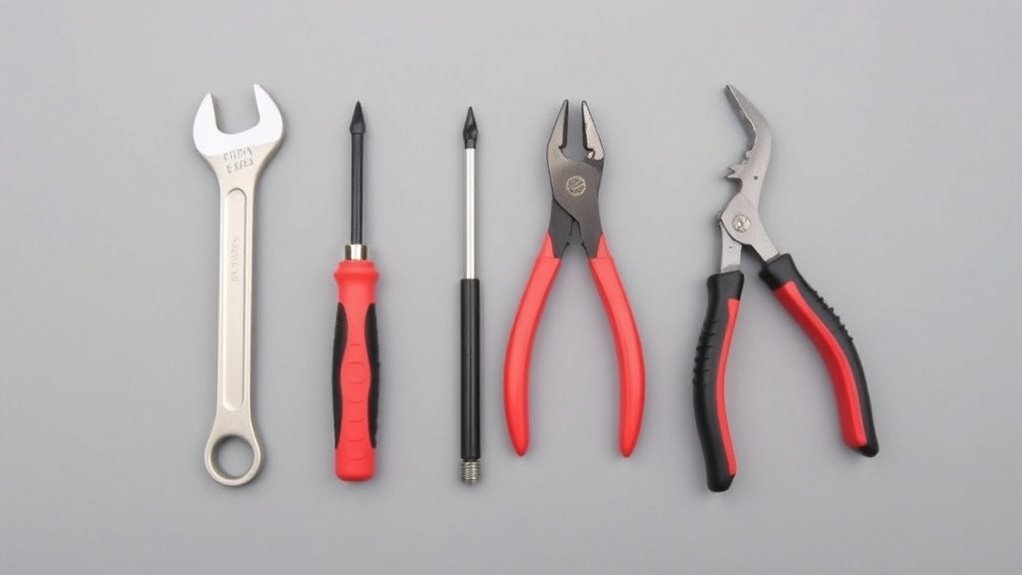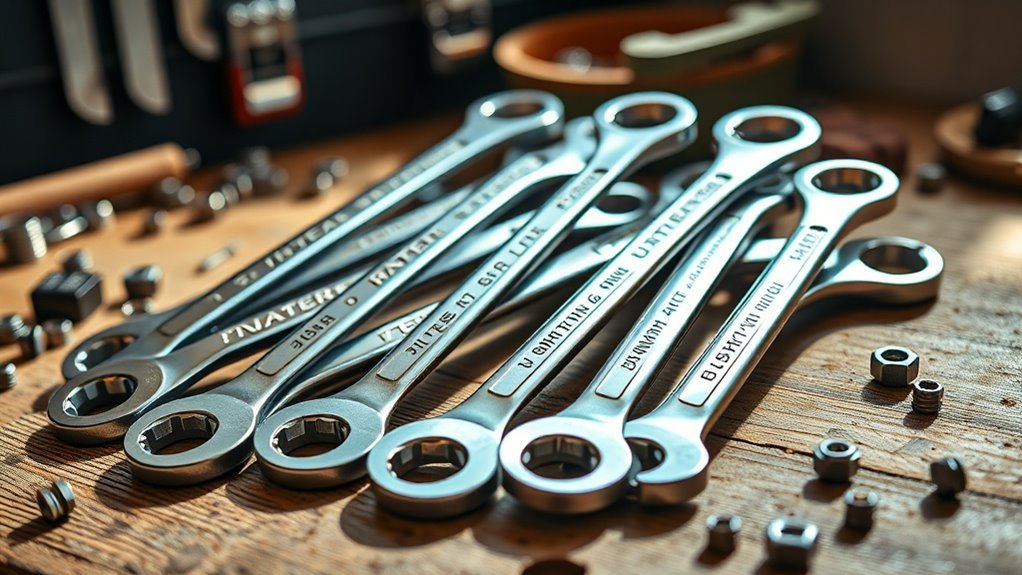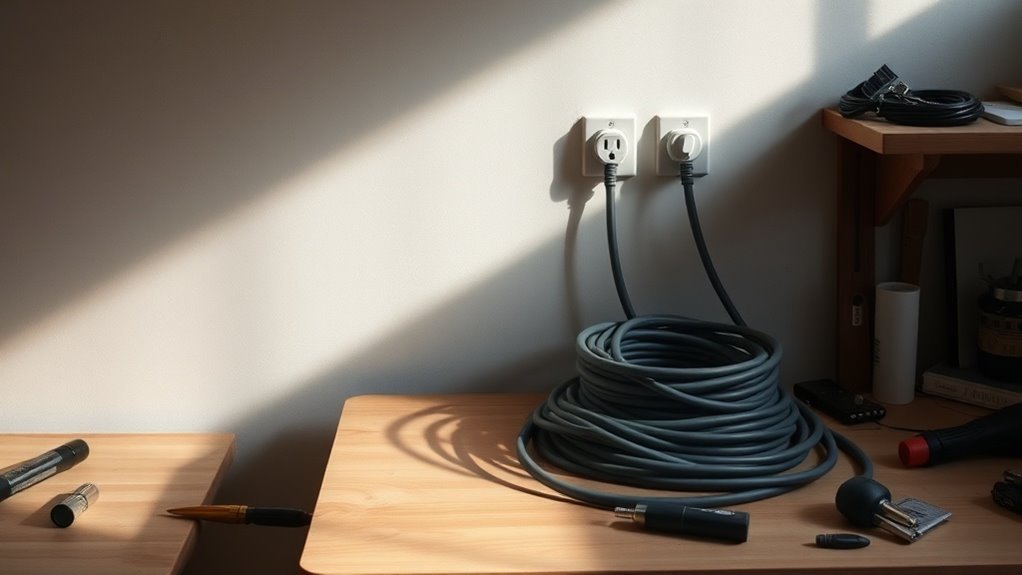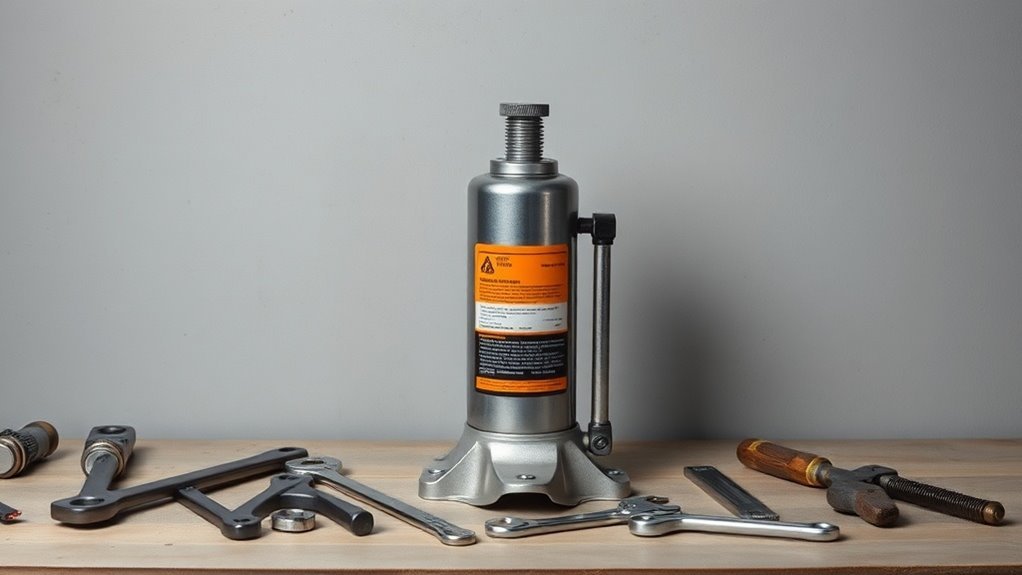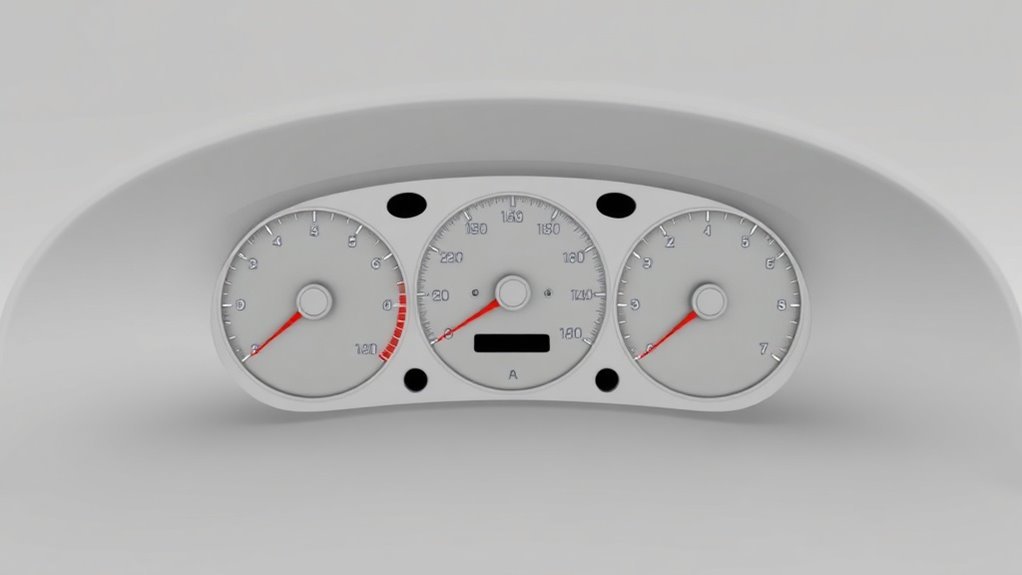The Science of Laser Distance Measuring Tools
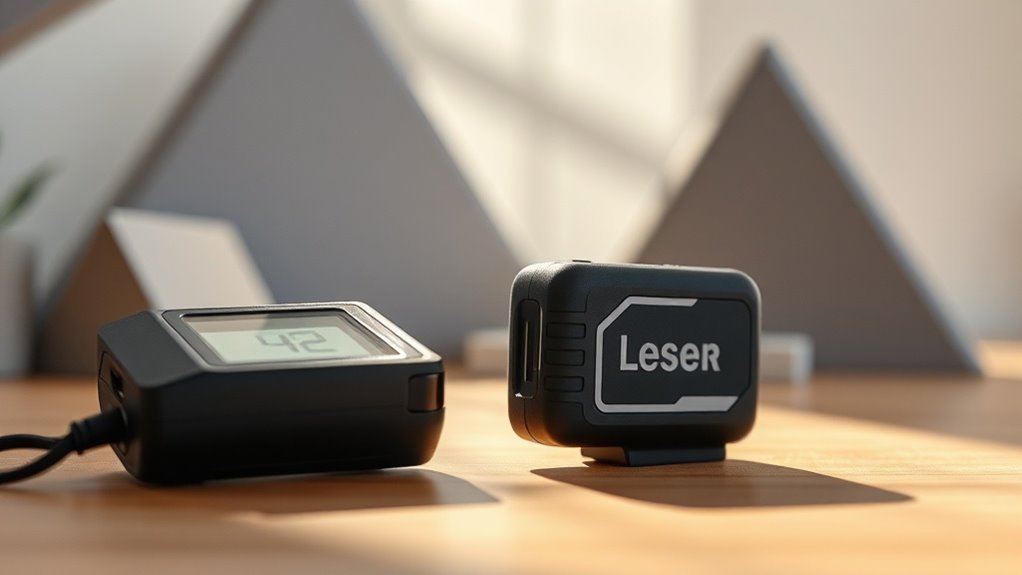
Laser distance measuring tools utilize advanced laser technology to provide quick and accurate distance measurements. They work by emitting a laser beam and calculating the time it takes for the beam to return after reflecting off a target. Key components include a laser emitter, receiver, and microprocessor that processes the measurements. With various applications in construction and design, understanding their features can greatly enhance efficiency. Keep going to uncover more insights about these innovative tools.
Key Takeaways
- Laser distance measuring tools use light reflection principles to accurately determine distances based on the time it takes for a laser beam to return.
- Key components include a laser emitter, receiver, and microprocessor that processes data for precise measurements displayed for the user.
- These tools improve efficiency over traditional methods, particularly in tight spaces or long-distance scenarios, minimizing human error.
- Measurement accuracy varies by tool type, with professional-grade devices achieving precision within ±1 mm for construction needs.
- Enhanced usability features, like Bluetooth connectivity and built-in levels, assist in achieving accurate measurements while simplifying data management and alignment tasks.
Understanding Laser Technology
Laser technology has revolutionized the way we measure distances, making it faster and more accurate than traditional methods.
You’ll find that laser distance measuring tools use the principles of light reflection to capture measurements. When you point the laser at a target, it emits a beam that bounces back, calculating the time it takes for the light to return. This instant feedback lets you obtain precise measurements, often within millimeters.
Unlike tape measures or rangefinders, laser devices eliminate guesswork, streamlining tasks in construction, surveying, or home projects. Plus, many models come with features like memory storage and angle measurement, further enhancing usability.
Principles of Distance Measurement
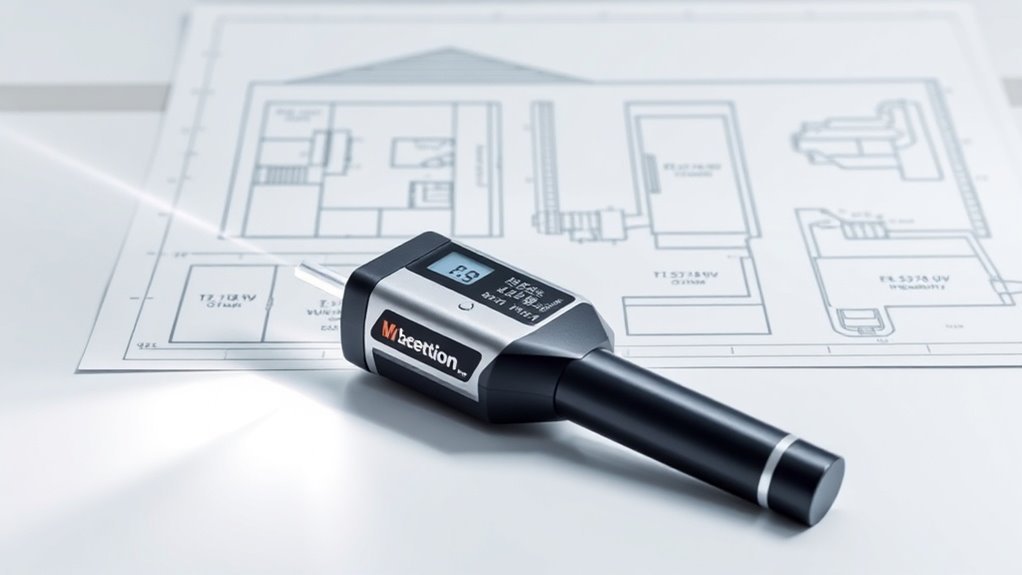
Distance measurement relies on the fundamental principles of geometry and physics, specifically the travel time of light.
When using a laser distance measuring tool, a laser beam is emitted towards a target, and you need to understand that the time it takes for that beam to travel to the object and back is essential. By calculating this travel time and knowing the speed of light, you can derive the distance accurately.
Fundamentally, the formula you’re working with is distance equals speed multiplied by time, divided by two for the round trip. This basic principle allows you to measure long distances with precision, making laser tools invaluable in construction and surveying applications. Additionally, laser triangulation provides another method for determining distance, further enhancing the versatility of laser measuring tools.
Components of Laser Distance Measuring Tools
When considering the components of laser distance measuring tools, it’s important to recognize how each part contributes to accurate measurements. These devices typically include a laser emitter, receiver, microprocessor, and display. The laser emitter sends out a beam that bounces off the target, while the receiver detects the reflection and relays it to the microprocessor, which calculates the distance. Finally, the display shows the results for you to read instantly.
Here’s a quick overview of these components:
| Component | Function |
|---|---|
| Laser Emitter | Sends out a laser beam |
| Receiver | Detects the reflected laser beam |
| Microprocessor | Processes the measurements |
| Display | Shows the calculated distance |
How Laser Distance Measurement Works
Understanding how laser distance measurement works can simplify your projects and improve accuracy.
These tools use a laser beam to measure distances by sending a pulse of light toward a target. When the beam hits the target, it reflects back to the device. The distance is calculated by measuring the time it takes for the light to travel to the target and back. This time-of-flight method provides precise readings.
Most laser distance measurers also feature digital displays that show you the distance instantly, making it easy to take measurements in a variety of settings. With advanced models, you can even store data, calculate areas, and add measurements together, increasing your efficiency on the job site.
Advantages Over Traditional Measuring Methods
While traditional measuring methods often require multiple tools and manual calculations, laser distance measuring tools streamline the process and enhance accuracy.
You’ll appreciate the convenience of a single device that provides quick measurements without the hassle of tape measures or rulers. With a simple push of a button, you can instantly obtain measurements, reducing the risk of human error.
These tools are especially beneficial in tight spaces where a tape measure can be cumbersome. They’re also capable of measuring longer distances effortlessly, which is perfect for larger projects.
Plus, many models offer additional features, like calculating area and volume, making them versatile.
All in all, using laser distance measuring tools saves you time and effort, ensuring efficient project execution.
Accuracy and Precision in Measurement
Laser distance measuring tools not only simplify the measuring process but also enhance accuracy and precision. When you use a laser distance meter, you get quick results with minimal room for human error.
Unlike traditional tape measures, which can introduce discrepancies from bending or misalignment, laser tools provide a direct line of sight that guarantees accurate readings. Many models even feature advanced technology to account for factors like temperature and atmospheric pressure, further refining your measurements.
As you rely on these devices, you’ll find that they help eliminate guesswork, giving you results that are consistently reliable. In construction, design, or DIY projects, this level of precision is invaluable, assuring your work is both efficient and effective. Additionally, regular calibration of tools is essential to maintaining the accuracy of these devices over time.
Applications Across Various Industries
When you think about laser distance measuring tools, their versatility across various industries really stands out.
In construction, they’re essential for accurate site measurements, while interior designers use them for precise planning of spaces. They can also enhance DIY projects by allowing amateurs to achieve professional-level precision in their work.
Whether you’re building or decorating, these tools are game-changers.
Construction Site Measurements
Accurate measurements are essential on construction sites, as even slight errors can lead to significant complications down the line.
Laser distance measuring tools streamline the measuring process, giving you precise measurements in seconds. Whether you’re determining site boundaries, calculating material needs, or ensuring structures are level, these tools enhance efficiency and accuracy.
You don’t have to rely on traditional tape measures, which can be time-consuming and prone to human error. Instead, you can easily access real-time data and adjust plans to fit actual measurements.
Using laser distance measuring tools not only saves time but also reduces costs associated with mistakes, making them invaluable for contractors, architects, and builders alike.
Embrace this technology to elevate your on-site measuring game.
Interior Design Planning
Whether you’re redesigning a cozy living room or planning a large commercial space, interior design planning benefits greatly from the use of laser distance measuring tools.
These tools allow you to take precise measurements quickly, ensuring every inch of your space is accounted for. You can easily map out furniture placements, wall spans, and other critical features without the hassle of traditional measuring tapes.
This precision not only streamlines your design process, but it also helps you visualize different layouts, maximizing both function and aesthetics. Various industries, from retail to hospitality, find laser distance measuring tools invaluable for efficient space planning.
Embracing this technology can greatly enhance your designing experience, saving you time and reducing costly errors.
Choosing the Right Laser Distance Measuring Tool
When it comes to choosing the right laser distance measuring tool, you’ll want to prioritize measurement accuracy based on your specific tasks. Consider what features will best fit your needs, whether it’s for construction, interior design, or another application. Making the right choice can greatly enhance your efficiency and precision in measurements. Additionally, understanding the importance of measurement accuracy can significantly improve your overall craftsmanship.
Measurement Accuracy Considerations
Choosing the right laser distance measuring tool can greatly impact the precision of your measurements, especially in demanding environments. Factors like beam divergence, environmental conditions, and unit calibration play a critical role in ensuring accuracy. To help you assess tool performance, consider the table below:
| Tool Type | Accuracy Variation | Best Use Scenario |
|---|---|---|
| Professional Level | ±1 mm | Construction sites |
| Standard Level | ±3 mm | General home use |
| Budget Level | ±5 mm | DIY projects |
| Specialty Level | ±0.5 mm | High-precision needs |
Selecting a tool that meets the accuracy requirements for your specific task can save you time and reduce costly errors. Always evaluate the specifications before making a choice.
Features for Your Needs
Accurate measurements are just the beginning; the features of laser distance measuring tools can greatly enhance their usability and effectiveness for your specific tasks.
When choosing the right tool, consider its range, as some models offer extended distances for larger projects. You’ll want to look for features like Bluetooth connectivity for easy data transfer to your devices, or a built-in level for aligning measurements accurately.
Additionally, a backlit display can be essential for visibility in dim environments. You might also appreciate additional functions like area and volume calculations, which can save time.
Ultimately, select a tool that aligns with your unique needs and work style, making your measuring tasks quicker and more efficient.
Tips for Effective Use of Laser Distance Measuring Tools
Using laser distance measuring tools can greatly enhance your measuring tasks, but getting the most out of them requires some best practices. First, guarantee a clear line of sight to the target for accurate readings. Second, use a stable surface to avoid movement, which can lead to measurement errors. Finally, always check the batteries to make certain they’re fully charged before starting.
Here’s a quick reference table for effective use:
| Tip | Action | Benefit |
|---|---|---|
| Clear Line of Sight | Remove obstacles | Improves accuracy |
| Stable Surface | Use a tripod or flat surface | Reduces measurement error |
| Check Batteries | Test before use | Avoids interruptions |
Questions
How Do Weather Conditions Affect Laser Measurements?
Weather conditions can impact laser measurements; humidity and temperature variations can cause refraction, potentially leading to inaccuracies. Rain or fog can also obstruct the beam, making it less effective and your measurements less reliable.
Can Laser Distance Measuring Tools Work in Bright Sunlight?
Yes, laser distance measuring tools can work in bright sunlight, but you might struggle with visibility. Using a laser with higher power or an integrated display can help improve your experience in such conditions.
Is It Safe to Use Laser Measuring Tools Around People?
Yes, it’s generally safe to use laser measuring tools around people as long as you avoid aiming the laser directly at anyone’s eyes. Just follow the manufacturer’s guidelines and maintain a reasonable distance for safety.
What Battery Types Are Commonly Used in Laser Distance Measurement Tools?
Most laser distance measuring tools use rechargeable lithium-ion batteries or standard alkaline batteries. Lithium-ion offers longer life and quicker charging, while alkaline is more widely available. You’ll want to choose based on your usage needs.
How Do I Maintain My Laser Distance Measuring Tool?
Maintaining your laser distance measuring tool? Just avoid using it in extreme temperatures and keep it clean, obviously. It’s not like you’ll need to replace batteries regularly or store it properly, right?
Conclusion
To sum up, laser distance measuring tools are a game-changer, making measurement as easy as pie. With their precision and versatility, they’re transforming industries and simplifying your projects. Whether you’re an architect, contractor, or DIY enthusiast, choosing the right tool and using it effectively will save you time and enhance accuracy. So, embrace the technology that cuts through the clutter, and get ready to measure your success one laser shot at a time!

